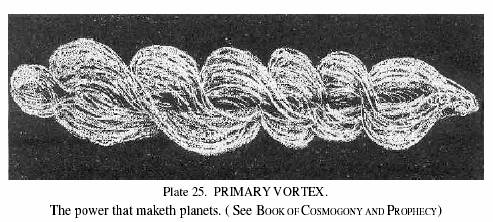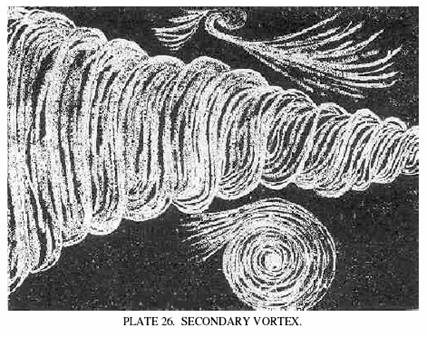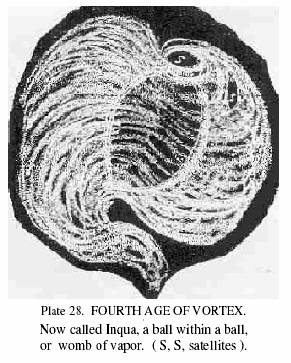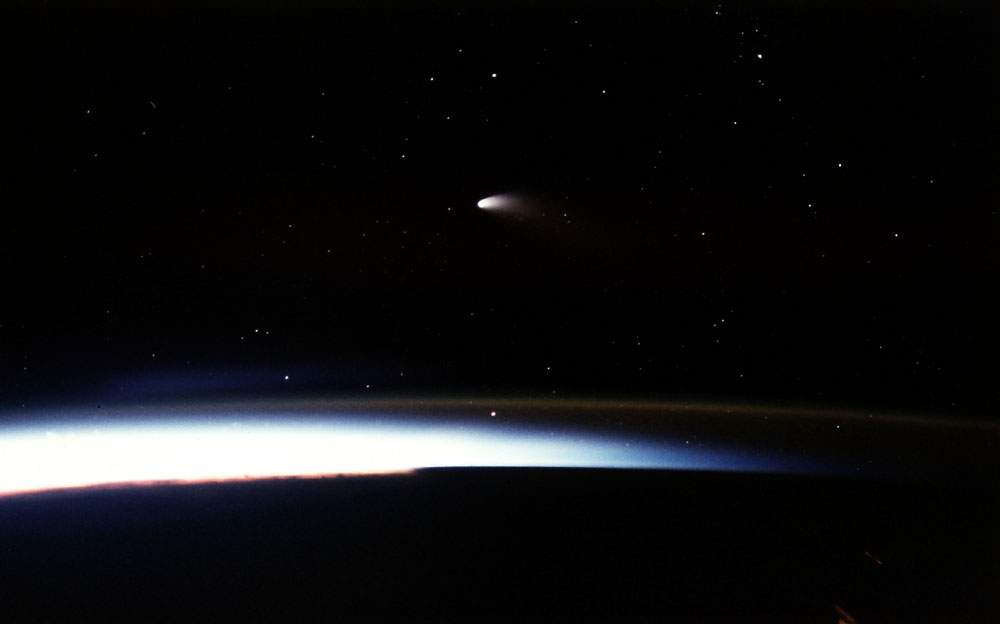Since scientists have been able to send instruments into space to encounter comets and receive data directly, they have been constantly surprised and mystified, as most of what they think they know about comets and other celestial bodies is being challenged and new unexpected questions continually arise.
No less challenging are the findings of the unintentional encounter of a comet's tail by Ulysses space craft, which had previously flown through a comet's tail and failed to register what this time was registered as no less than the effects of the magnetic field of the comet. This was indicated by the ‘solar wind’ meeting a significant resistance and charge, as would be expected when the 'solar wind' encounters a magnetosphere of a planet. (See below for reference). "The region around a planet where the magnetic field is strong enough to slow down or even repel the solar wind is called the magnetosphere".
What was detected was the magnetosphere of the comet at least 160 million miles from its nucleus! This is an extraordinary revelation to scientists, since even the tail end of the magnetosphere of a decent sized planet such as Earth is nowhere near that length. And the idea that a comet has a magnetosphere challenges the foundation of what scientists believe is the cause of a magnetosphere.
Less than 50 years ago, scientists believed that the tail of the comet was formed solely by the heating of icy particles as the comet travelled closer to the sun. But the direction of the comet tail whether it was travelling toward the sun or away from the sun indicated there was some force travelling from the sun outward, pushing the tail before it, because the tail streamed away from the sun even though the comet itself was moving away from the sun. This observation led to the discovery of the `solar wind'. But what they didn't know up until now, was that the 'solar wind' met resistance of the tail of a comet so far away from its visible tail - some 160 million miles from the nucleus of the comet! This means that a magnetic field extended an enormous distance from the centre of a small chunk of material only a few kilometres in diameter!
And here again is Oahspe confirmed in the extensive advanced information provided about vortices, only a fraction of which is quoted here. A comet, being in the first stages in planetary formation, is within a vortex in the early stage when it is long and extended as in the primary vortex shown in the image below. The shape of the primary vortex is long and extended, needle-like, but the shape of a more mature vortex changes, first spiralling upon itself, winding up its tail to become conical and then globular.

Book of Lika, 7.
||4. Then the course of Lika's airavagna changed, by his commands,
sent through the comet
Yo-to-gactra, a new condensing world, already with a head of fire four thousand miles
broad; a very ball of melted
corpor, whirling like the spindle of a filling spool, forever
winding unto itself the wide extending nebulae (the tail). Here were coursing along, hundreds of
thousands of school-ships, with students and visitors to view the scenes,
most grand in
rolling on, now round, now broken, now outstretched, this
ball of liquid fire, whirling in
the vortex, thirty million miles long.
To balance against which vortex many of the ships
tossed and rolled,
dangerously, had they not been in skilled hands; and, as they were,
causing millions of the students on many a ship to fear and tremble,
perceiving how
helpless and stupid they were compared to the very
Gods who had them in charge.||

The ratio of Yo-to-gactra’s nucleus and tail (the nucleus being four thousand miles diameter and the tail 30 million miles long), and its tail reducing in size as it progesses in the secondary stage of a vortex, indicates its vortex would appear like that of the smaller top image in plate 26. (The two lower images being even more advanced, the cone being a side on view and the “spiral pinwheel” being a cross sectional view.)
For comparison below are some figures for the length of magnetosphere of the earth and Jupiter:
http://www.hq.nasa.gov/office/pao/History/EP-177/ch3-4.html
||The measurements from many space missions have been combined to
reveal
that the Earth's magnetosphere is blown out by the solar wind
into
a teardrop shape. The head of the drop extends only about
10
Earth radii, or about 65,000 kilometers (40,000 miles) "upwind"
toward the Sun. The tail of the drop stretches away in the direction
opposite the Sun,
actually reaching beyond the Moon's orbit. This
long magnetotail extends more
than 600,000 kilometers (370,000 miles)
from the Earth.||
http://www2.jpl.nasa.gov/galileo/messenger/oldmess/Mag.html
||The Galileo tour will include a large looping orbit that provides
two
months in the near-planetary regions of the tail where evidence
of
similar processes will be sought. (Jupiter's tail may extend as
far as
Saturn, over 650 million kilometers (390 miles) distant, but
Galileo will go only
about 11 million kilometers (7 million miles)
down the tail.)||
The actual length of the tail of Jupiter's Magnetosphere is not known, and the estimates given for earth's vary greatly, therefore it is difficult to compare ratios as to size between earth and Jupiter, but the ratio between earth and a comet, there is such a great distance in size that the ratios are obvious. And so, the length of the magnetosphere of the comet tail being more than 160 million miles compared to earth's being estimated from 370,000 to 6 million miles in length indicates the great difference in the shape of their magnetic fields which to some extent indicate the shape of the vortex. The earth's being in the mature globular stage (beyond the Fourth Stage, as shown in Oahspe, Plate 28 [1882 Ed.])has a relatively short m'vortexya (North and South Dipole).

For the first time at a comet, researchers detected O3+ oxygen ions (atoms of oxygen with a
positive charge because they have five electrons instead of eight). This suggests that the solar wind
ions,
originally missing most of their electrons, picked up some of their missing electrons when
they passed through McNaught's atmosphere. The comet served as a source of electrons, said
Michael Combi, a U-M
space science professor who is an author of the paper.
SWICS also found that even at 160 million miles from the comet's
nucleus, the tail had slowed
the solar wind to half its normal speed.
The solar wind would usually be about 435 miles
per second at that
distance from the sun, but inside the comet's ion tail, it was less
than 249 miles per second.
"This was very surprising to me," Combi said. "Way past the orbit of Mars, the solar wind
felt the disturbance of this little comet. It will be a serious challenge for us theoreticians and
computer
modelers to figure out the physics."......what happened when we caught the tail of a comet
that happened to pass very near the sun.||

Hale Bop 1997, view from Spaceshuttle Columbia